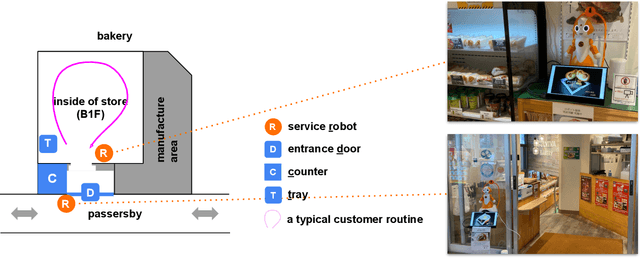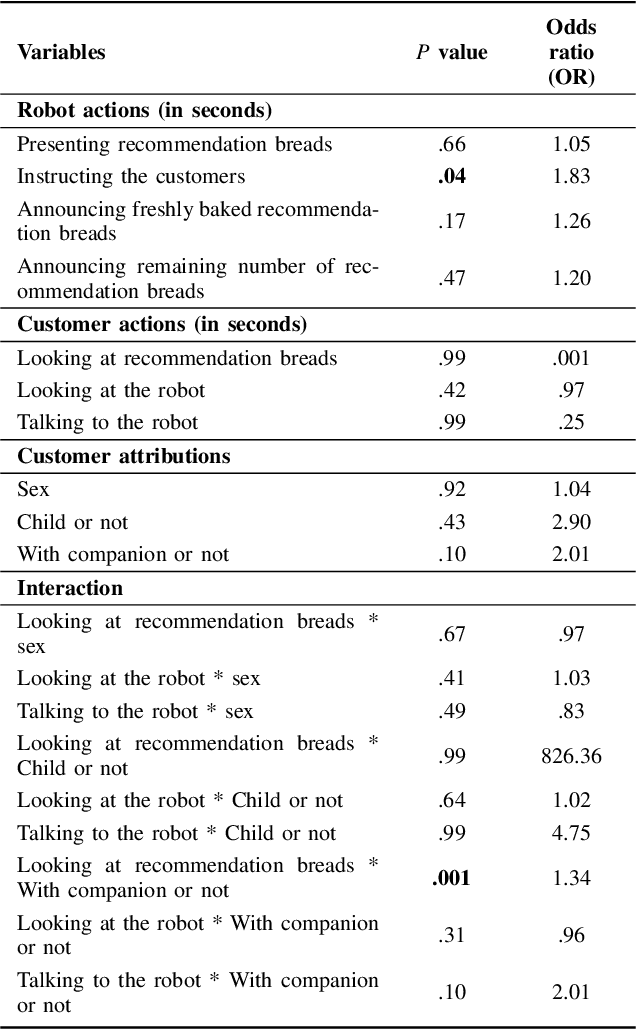Sichao Song
Influence of collaborative customer service by service robots and clerks in bakery stores
Dec 20, 2022



Abstract:In recent years, various service robots have been introduced in stores as recommendation systems. Previous studies attempted to increase the influence of these robots by improving their social acceptance and trust. However, when such service robots recommend a product to customers in real environments, the effect on the customers is influenced not only by the robot itself, but also by the social influence of the surrounding people such as store clerks. Therefore, leveraging the social influence of the clerks may increase the influence of the robots on the customers. Hence, we compared the influence of robots with and without collaborative customer service between the robots and clerks in two bakery stores. The experimental results showed that collaborative customer service increased the purchase rate of the recommended bread and improved the impression regarding the robot and store experience of the customers. Because the results also showed that the workload required for the clerks to collaborate with the robot was not high, this study suggests that all stores with service robots may show high effectiveness in introducing collaborative customer service.
Service Robots in a Bakery Shop: A Field Study
Aug 19, 2022


Abstract:In this paper, we report on a field study in which we employed two service robots in a bakery store as a sales promotion. Previous studies have explored public applications of service robots public such as shopping malls. However, more evidence is needed that service robots can contribute to sales in real stores. Moreover, the behaviors of customers and service robots in the context of sales promotions have not been examined well. Hence, the types of robot behavior that can be considered effective and the customers' responses to these robots remain unclear. To address these issues, we installed two tele-operated service robots in a bakery store for nearly 2 weeks, one at the entrance as a greeter and the other one inside the store to recommend products. The results show a dramatic increase in sales during the days when the robots were applied. Furthermore, we annotated the video recordings of both the robots' and customers' behavior. We found that although the robot placed at the entrance successfully attracted the interest of the passersby, no apparent increase in the number of customers visiting the store was observed. However, we confirmed that the recommendations of the robot operating inside the store did have a positive impact. We discuss our findings in detail and provide both theoretical and practical recommendations for future research and applications.
 Add to Chrome
Add to Chrome Add to Firefox
Add to Firefox Add to Edge
Add to Edge